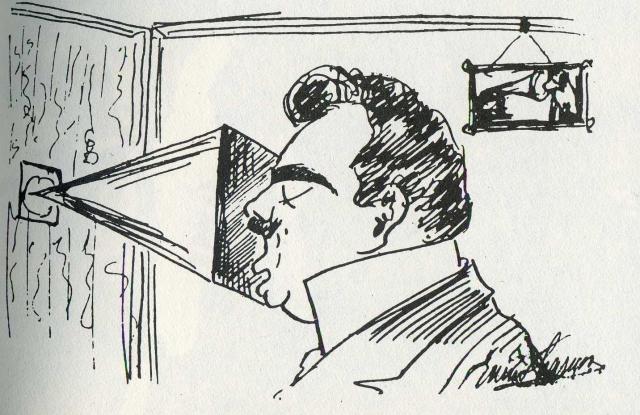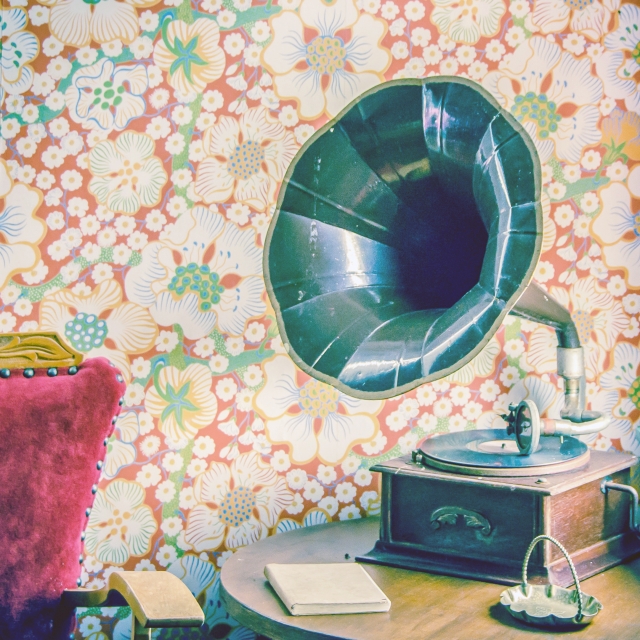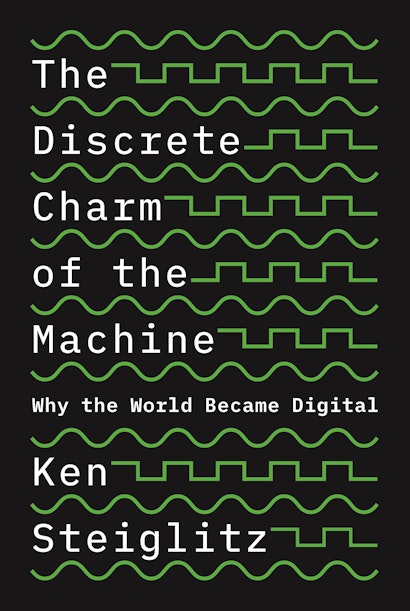We’re excited to introduce a new series from Ken Steiglitz, computer science professor at Princeton University and author of The Discrete Charm of the Machine.
The first record to sell a million copies was Enrico Caruso’s 1904 recording of “Vesti la giubba.” There was nothing digital, or even electrical about it; it was a strictly mechanical affair. In those days musicians would huddle around a horn which collected their sound waves, and that energy was coupled mechanically to a diaphragm and then to a needle that traced the waveforms on a wax or metal-foil cylinder or disc. For many years even the playback was completely mechanical, with a spring-wound motor and a reverse acoustical system that sent the waveform from what was often a 78 rpm shellac disc to a needle, diaphragm, and horn. Caruso almost single-handedly started a cultural revolution as the first recording star and became a household name—and millionaire (in 1904 dollars)—in the process. All without the benefit of electricity, and certainly purely analog from start to finish. Digital sound recording for the masses was 80 years in the future.

The 1904 Caruso recording I mentioned is perhaps the most famous single side ever made and is readily available online. It was a sensation and music lovers who could afford it were happy to invest in the 78 rpm (or simply “78”) disc, not to mention the elaborate contraption that played it. In the early twentieth century a 78 cost about a dollar or so, but 1904 dollars were worth about 30 of today’s dollars, a steep price for 2 minutes and 28 seconds of sound full of hisses, pops, and crackles, and practically no bass or treble. In fact the disc surface noise in the versions you’re likely to hear today has been cleaned up and the sound quality greatly improved—by digital processing of course. But being able to hear Caruso in your living room was the sensation of the new century.The poor sound quality of early recordings was not the worst of it. That could be fixed, and eventually it was. The long-playing stereo record (now usually called just “vinyl”) made the 1960s and 70s the golden age of high fidelity, and the audiophile was born. I especially remember, for example, the remarkable sound of the Mercury Living Presence and Deutsche Grammophon labels. The market for high-quality home equipment boomed, and it was easy to spend thousands of dollars on the latest high-tech gear. But all was not well. The pressure of the stylus, usually diamond, on the vinyl disc wore both. There is about a half mile of groove on an LP record, and the stylus that tracks it has a very sharp, very hard tip; records wear out. Not as quickly as the shellac discs of the 20s and 30s, but they wear out.
The noise problem for analog recordings is exacerbated when many tracks are combined, a standard practice in studio work in the recording industry. Sound in analog form is just inherently fragile; its quality deteriorates every time it is copied or played back on a turntable or past a tape head.
Everything changed in 1982 with the introduction of the compact disc (CD), which was digital. Each CD holds about 400 million samples of a 74-minute stereo sound waveform, each sample represented by a 2-byte number (a byte is 8 bits). In this world those 800 million bytes, or 6.4 billion bits (zeros or ones) can be stored and copied forever, absolutely perfectly. Those 6.4 billion bits are quite safe for as long as our civilization endures. There are 19th century tenors whose voices we will never hear. But Caruso, Corelli, Domingo, Pavarotti… their digital voices are truly immortal.
Ken Steiglitz is professor emeritus of computer science and senior scholar at Princeton University. His books include The Discrete Charm of the Machine, Combinatorial Optimization, A Digital Signal Processing Primer, and Snipers, Shills, and Sharks. He lives in Princeton, New Jersey.

